


xxxxxIn his early years as a painter Paul Cézanne was influenced by the romantic works of Géricault and Delacroix. His works were dark in tone and violent in mood. However, soon after working in Paris in the early 1860s, he met the painter Camille Pissarro and became interested in the Impressionist movement. He met a number of its leading members, and, working alongside Pissarro, painted from nature for the best part of two years. As a result, his colours became brighter and he introduced the effects of light, but he never fully captured the spontaneity achieved by the likes of Monet and Renoir. He exhibited at the first Impressionist exhibition in 1874, and again in 1877, but by then he was spending more and more time around his home town of Aix-en-Province. He settled there in the early 1880s, and it was then that he developed a revolutionary use of colour to portray the structure and volume of objects, be it in landscapes, still life or portraiture. Among his major works at this time were Montagne Sainte-Victoire (a mountain he painted many times), Bibémus Quarry, Lake Annecy, Still Life with Fruit, and a series of scenes depicting men playing cards and women bathers. An exhibition of his work in 1895 finally brought him recognition. Whilst he was associated with the Impressionists, he was more interested in basic shapes and the illusion of depth. As a result, his vivid colours and geometric forms, together with his distorted, abstract figures, had a profound effect upon the development of the modern art forms of Cubism and Fauvism. As a man he was abrasive by nature and full of self doubt, but for many years he was a close friend of the famous novelist Émile Zola.
PAUL CÉZANNE 1839 - 1906 (W4, Va, Vb, Vc, E7)
Acknowledgements
Cézanne: by the French artist Camille Pissarro (1830-1903), 1874 – National Gallery, London; Cézanne Artwork: The House of Dr.Gachet – Musée d’Orsay, Paris; Landscape at Auvers – Philadelphia Museum of Art; The House of Père Lecroix National Gallery of Art, Washington; Montagne Sainte Victoire – Courtauld Institute Galleries, London; Bibémus Quarry Museum Folwang. Essen; Lake Annecy – Courtauld Institute Galleries, London; The Large Bathers – National Gallery, London; Still Life with fruit – Hermitage Museum, St. Petersburg; The Card Players – Musée d’Orsay, Paris; Madame Cézanne in Yellow Chair – The Art Institute of Chicago.
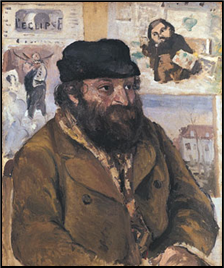 xxxxxIn 1874 the French artist Paul Cézanne exhibited three landscapes at the first of eight exhibitions held by a group of rebel artists based in Paris. These young painters were determined to break away from the restrictions imposed by the artistic hierarchy in Paris and adopt the basic aims of a new form of art. Painting out of doors, and employing broken brush strokes and strong colours, they attempted, each in his own way, to capture at a precise moment the colour, light and movement of an everyday scene. It was at this exhibition that a painting by the leading member of the group, Claude Monet, entitled Impression, Sunrise, gave the group its name, “Impressionism” - a movement which, though ridiculed at its outset, was to be the first step in the creation of modern art. And Cézanne, by his unique contribution, was to play a dominant role in this move towards a new series of art forms. (The portrait is by his friend and mentor Camille Pissarro).
xxxxxIn 1874 the French artist Paul Cézanne exhibited three landscapes at the first of eight exhibitions held by a group of rebel artists based in Paris. These young painters were determined to break away from the restrictions imposed by the artistic hierarchy in Paris and adopt the basic aims of a new form of art. Painting out of doors, and employing broken brush strokes and strong colours, they attempted, each in his own way, to capture at a precise moment the colour, light and movement of an everyday scene. It was at this exhibition that a painting by the leading member of the group, Claude Monet, entitled Impression, Sunrise, gave the group its name, “Impressionism” - a movement which, though ridiculed at its outset, was to be the first step in the creation of modern art. And Cézanne, by his unique contribution, was to play a dominant role in this move towards a new series of art forms. (The portrait is by his friend and mentor Camille Pissarro).
xxxxxCézanne was born in the town of Aix-en-Provence in southern France, the son of a wealthy banker. He was educated at the Collège Bourbon and it was there that he met the young writer-to-be Émile Zola and began a friendship which lasted well into the 1880s. He aspired to become an artist from an early age, but attended a law course in Aix in order to please his father. It was not until 1861 that his father reluctantly agreed to his studying art in Paris and gave him a generous allowance to cover his living costs. There, having met up with Zola, he attended the Académie Suisse but failed to gain entrance to the École des Beaux Arts. Initially his style was influenced by the works of the old masters, particularly those of the romantic painters Géricault and Delacroix, and his paintings at this time, such as The Abduction of 1867 and The Murder a year later, were dark in tone and violent in mood. However, at this stage he was also fascinated by the unconventional style and subject matter of the rebel realists Gustave Courbet and Édouard Manet, and this awakened his interest in the study of contemporary life.
xxxxxBut it was his friendship with the artist Camille Pissarro, whom he met while at the Académie Suisse, that played the major part in his artistic development. Through this friendship he met other members of the impressionist movement, including Monet, Renoir, Sisley and Degas, and, won over by their aims and ideas, abandoned his romantic vision. Together with Pissarro he spent two years painting landscapes at Pontoise and Auvers, just outside Paris, and, under his guidance gradually adopted the basic elements of Impressionism - pure, strong colours, broken brushwork and the fleeting effects of light. To this period belongs three paintings from Auvers (illustrated below): The House of Dr Gachet, Landscape at Auvers, and The House of Père Lacroix. Even at this stage, however, one can detect a movement away from spontaneity, and an interest in form and depth which was to become an obsession later in his career.
Vb-1862-1880-Vb-1862-1880-Vb-1862-1880-Vb-1862-1880-Vb-1862-1880-Vb-1862-1880-Vb
xxxxxCézanne exhibited a number of landscapes and still lifes in the Impressionist Exhibition of 1877 but, as in 1874, his works attracted some harsh criticism. He had never been a fully-committed member of the Impressionist movement, and he was acutely aware that he lacked in part the technical skills required by this new art form, as illustrated by the likes of Monet and Renoir. Full of self doubt, abrasive by nature, and prone to fits of depression, he decided to distance himself from the movement and the restrictions it imposed upon him. From 1878 onwards he began to make frequent visits to Aix, the town of his birth, and by the 1880s he had settled in this region. He made numerous trips to Paris to keep in touch with Zola and “the humble and colossal Pissarro”; had visits from Renoir and Monet (whom he called “the mightiest of us all); spent five months in Switzerland; and at one time visited Monet at Giverny (where he met the sculptor Auguste Rodin), but over the last thirty years of his life it was the pays d’Aix that provided him with both the solace and the inspiration that he required. Landscapes of his beloved Province were now to occupy most of his time, together with portraits, a series of imaginary bathing scenes, and numerous still-lifes, a genre in which he excelled.
xxxxxDuring what has come to be known as his “constructive period”, beginning in the late 1870s, Cézanne painted at a number of locations around his home town, including Jas de Bouffan, the family estate, L’Estaque on the Mediterranean coast, the small, picturesque village of Gardanne, the quarry at Bibémus, the nearby Chateau Noir; and the Montagne Sainte-Victoire, an imposing height which featured in over twenty of his works. Deeply engrossed in the problems of his art, he retained the brilliant colours of Impressionism, but by simplifying the movement’s basic techniques and using parallel hatchings of fairly dense pigment, he produced what he termed “an impressionism of forms” - a three-dimensional illusion on a two dimensional canvas. Nature, he maintained, was “more depth than surface” and needed to be interpreted by “the cylinder, the sphere and the cone”. At the same time he used the juxtaposition of tone and texture to create an overall sense of harmony.
xxxxxIn 1886 Cézanne’s father died and this put an end to any money worries. He married his long-time mistress, Hortense Fiquet, in the April of that year, and was then able to devote all his daylight hours to developing his own, personal style. In the last fifteen years of his life he worked almost entirely in isolation, totally absorbed in his painting and troubled throughout by the onset of diabetes. In this period, during which his brushwork was notably freer, he gave much time over to still lifes - a genre which was well suited to his architectural approach - and he produced a number of expressionless portraits which were almost as impersonal in style as they were abstract in arrangement.
xxxxxAnd to these late years belonged a number of scenes showing men playing cards - studies in tone and light - and a series of paintings depicting women bathers. These bathing scenes demonstrate a new approach to figure painting, and they are full of serenity and light. Furthermore, whilst in subject matter they recapture something of the works of the old masters - notably those of Titian and Rubens - the distorted, abstract figures of the bathers paved the way to modern art.
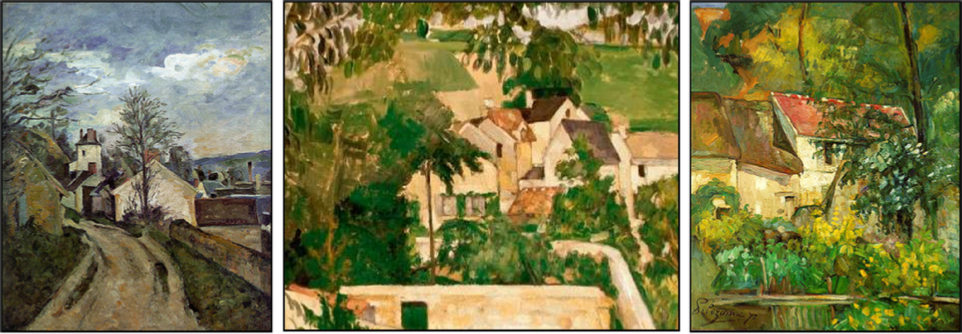
xxxxxFor Cézanne, recognition came late. For most of his life he had only been known to a few of his impressionist colleagues - notably Pissarro, Renoir and Monet - and one or two of the young artists of his day, including the Dutch painter Vincent van Gogh and his friend, the French artist Paul Gauguin. All this changed in 1895. In that year an exhibition of his work at the Vollard Gallery in Paris brought him fame and respect, neither of which he openly sought. By the time of his death in 1906, caused by catching a chill while out painting, he had become a legendary figure, known throughout the art world. His last years were not happy ones, however. His diabetes made him even more irritable and unsociable, his marriage began to break up, and the end of his friendship with Zola greatly distressed him. Despite working in his beloved Province, he never found the inner peace he sought and needed.
xxxxxAlthough Cézanne exhibited with the Impressionists on two occasions and, at one time, worked closely with Camille Pissarro, his work was never impressionistic in the true sense of the word. He was more interested in portraying solidity and depth - be it in landscape, still life or portraiture - than in any 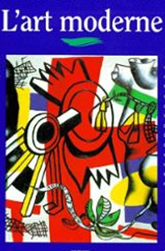 attempt to capture the spontaneity of a given scene. His aim was to create, as he put it, "something more solid and durable, like the art of the museums”. As a result, his innovative style - his vivid, bold colours, his geometric forms and his distorted figures - had a profound effect upon the development of modern art. The French artist Henri Matisse, the future leader of the Fauvist movement, was greatly influenced by his work, as was Pablo Picasso, the Spanish artist and sculptor who, together with the French painter and sculptor Georges Braque, was to found Cubism. Mattise described him as “a kind of benevolent god of painting”, and Picasso recognised him as his one and only master. It is perhaps not surprising that today Cézanne is regarded by many as the father of modern art.
attempt to capture the spontaneity of a given scene. His aim was to create, as he put it, "something more solid and durable, like the art of the museums”. As a result, his innovative style - his vivid, bold colours, his geometric forms and his distorted figures - had a profound effect upon the development of modern art. The French artist Henri Matisse, the future leader of the Fauvist movement, was greatly influenced by his work, as was Pablo Picasso, the Spanish artist and sculptor who, together with the French painter and sculptor Georges Braque, was to found Cubism. Mattise described him as “a kind of benevolent god of painting”, and Picasso recognised him as his one and only master. It is perhaps not surprising that today Cézanne is regarded by many as the father of modern art.
xxxxxThe exhibition of 1874, whilst it put Impressionism on the artistic map, was not a financial success, nor was the sale held later to clear the debt. Further exhibitions brought some reward for particular artists, but over the years the founder members of the movement slowly drifted away. Monet, Renoir and Sisley only exhibited once after 1879 and, as we have seen, Cézanne only entered work in the first two exhibitions. Indeed, Pissarro alone took part in all eight of the exhibitions. It was evident by the final show, held in 1886, that certain members - notably Renoir, Degas and Cézanne - had found the aims of Impressionism too restrictive and had developed their own individual style. Nevertheless, due to a small number of dealers who were sympathetic to the movement - and particularly Paul Durand-Ruel in this respect - Impressionism, though never a school, survived as a highly valued art form. As we shall see, it was extended by Pointillism around 1884 (Vc), a technical device pioneered by the French artists Georges Seurat and Paul Signac, and it influenced in some respects the work of a number of avant-garde painters, including Van Gogh and Paul Gauguin.
xxxxxIncidentally, Cézanne’s split with Zola came about in 1886. As we have seen, the famous writer was a close friend of Cézanne from their childhood days together in Aix-en-Province. It was Zola who encouraged him to take up painting, introduced him to Édouard Manet when they were together in Paris, and championed his works over many years. In 1886, however, with the publication of his novel The Masterpiece, this long friendship came to an abrupt e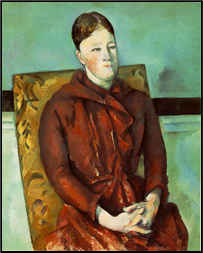 nd. The main character in this story, an unsuccessful and unbalanced painter named Claude Lantier, was seen by Cézanne as a thinly disguised reference to himself, and he wrote a brusque note to end their relationship. It must be said that Zola’s fictitious character did bear quite a close resemblance to Cézanne, both in personality and the course of his career. ……
nd. The main character in this story, an unsuccessful and unbalanced painter named Claude Lantier, was seen by Cézanne as a thinly disguised reference to himself, and he wrote a brusque note to end their relationship. It must be said that Zola’s fictitious character did bear quite a close resemblance to Cézanne, both in personality and the course of his career. ……
xxxxx…… Cézanne’s painting entitled Madame Cézanne in a yellow armchair, produced in the early 1890s, fetched over $23 million when auctioned in New York in 1997, and in 2012 a version of his The Card Players sold for $25 million.



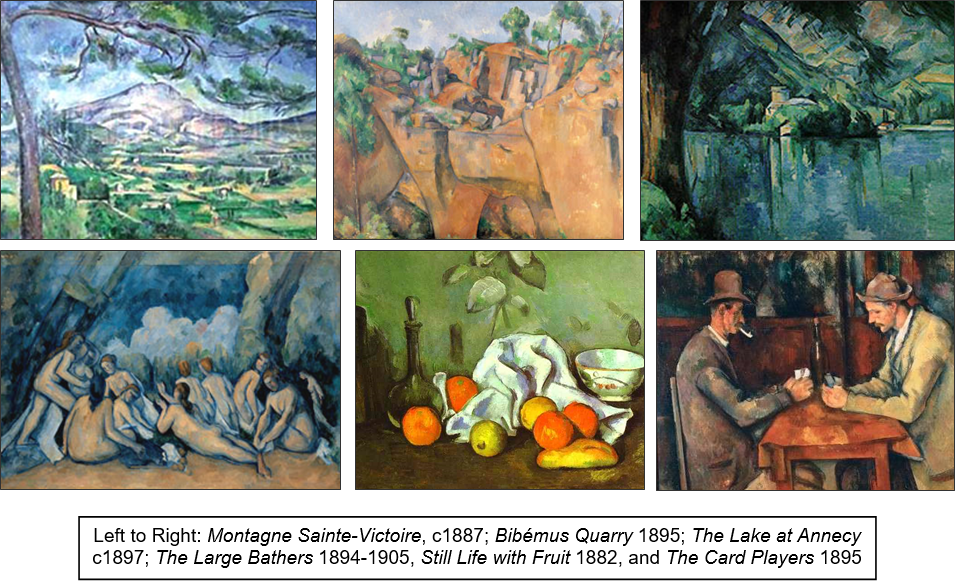



 xxxxxIn 1874 the French artist Paul Cézanne exhibited three landscapes at the first of eight exhibitions held by a group of rebel artists based in Paris. These young painters were determined to break away from the restrictions imposed by the artistic hierarchy in Paris and adopt the basic aims of a new form of art. Painting out of doors, and employing broken brush strokes and strong colours, they attempted, each in his own way, to capture at a precise moment the colour, light and movement of an everyday scene. It was at this exhibition that a painting by the leading member of the group, Claude Monet, entitled Impression, Sunrise, gave the group its name, “Impressionism” -
xxxxxIn 1874 the French artist Paul Cézanne exhibited three landscapes at the first of eight exhibitions held by a group of rebel artists based in Paris. These young painters were determined to break away from the restrictions imposed by the artistic hierarchy in Paris and adopt the basic aims of a new form of art. Painting out of doors, and employing broken brush strokes and strong colours, they attempted, each in his own way, to capture at a precise moment the colour, light and movement of an everyday scene. It was at this exhibition that a painting by the leading member of the group, Claude Monet, entitled Impression, Sunrise, gave the group its name, “Impressionism” -
 attempt to capture the spontaneity of a given scene. His aim was to create, as he put it, "something more solid and durable, like the art of the museums”. As a result, his innovative style -
attempt to capture the spontaneity of a given scene. His aim was to create, as he put it, "something more solid and durable, like the art of the museums”. As a result, his innovative style - nd. The main character in this story, an unsuccessful and unbalanced painter named Claude Lantier, was seen by Cézanne as a thinly disguised reference to himself, and he wrote a brusque note to end their relationship. It must be said that Zola’s fictitious character did bear quite a close resemblance to Cézanne, both in personality and the course of his career.
nd. The main character in this story, an unsuccessful and unbalanced painter named Claude Lantier, was seen by Cézanne as a thinly disguised reference to himself, and he wrote a brusque note to end their relationship. It must be said that Zola’s fictitious character did bear quite a close resemblance to Cézanne, both in personality and the course of his career. 


